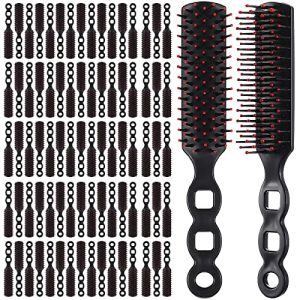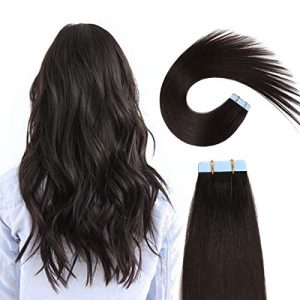The Men’s Circular Hair Brush is a grooming tool specifically designed for men with medium to long hair. It is a round brush that features a circular head with densely packed bristles, which are usually made of high-quality synthetic materials. The bristles are evenly distributed around the circumference of the brush head, allowing for even distribution of heat and airflow while styling the hair.
One of the key features of the Men’s Circular Hair Brush is its ergonomic handle. The handle is usually made of sturdy and lightweight materials, making it comfortable to hold and easy to maneuver. This feature ensures a firm grip on the brush, reducing the risk of dropping it while styling. The handle is also often equipped with a non-slip surface, providing extra control and stability during the grooming process.
Another important feature of the Men’s Circular Hair Brush is its
Product Description For Men’s Circular Hair Brush
Price: [price_with_discount]
(as of [price_update_date] – Details)
*Named Art Book of the Year by Colored Pencil Magazine*
*Named One of the 54 Best Colored Pencil Drawing Books of All Time by BookAuthority*
Rendering artwork that leaves viewers contemplating whether they might actually be looking at a photograph is no easy task. Introducing Realistic Portraits in Colored Pencil—a comprehensive guidebook that shows artists the secrets and steps to drawing lifelike portraits in this dynamic medium.
This engaging resource is perfect for artists who want to improve upon their existing skills and learn how to render realistic portraits utilizing a wide range of techniques. After details about the essential tools and materials, readers will learn to employ a variety of colored-pencil techniques, such as:
hatching
crosshatching
shading
blending
layering
burnishing
and much more!
Colored-pencil artists will also discover more complex techniques relative to creating realistic portraits, including how to render various textures, from hair and skin to clothing and facial features. Also included is valuable information for collecting all of the elements for polished and professional results.
Packed with clear, easy-to-follow instructions, plenty of helpful artist tips, and beautiful artwork that’s sure to inspire, Realistic Portraits in Colored Pencil is the perfect resource for any colored-pencil artist ready to take their skills to the next level. Find more techniques for drawing realistically in colored pencil in Realistic Still Life in Colored Pencil.
From the Publisher


INTRODUCTION
It might sound complicated or difficult, but when you break it down, creating a photorealistic portrait can be relatively easy, and throughout this book my goal is to show you just how easy it can be by advising you on tools and materials, providing helpful hints and techniques, and guiding you with easy-to-follow, step-by-step tutorials so that you can create portraits that you, your family and friends, or even customers will treasure for a lifetime.
Steps from Project 4: Developing Skin Tones








Start with white and mark the eye’s highlights and sclera. Remember that the sclera is rarely pure white; in this case, the whites are very bright with no other apparent color. I recommend using an opaque white, such as (CDL) White, and a heavy hand to fill in all the white areas, including the two highlights in the middle of the pupil. Then use (FC) Black to draw the darkest sections around the eye.
Use (FC) Black to draw the outline around the eye and add the lash reflections on the blue highlight, pressing more firmly at the base of the lashes and then lifting off as the reflections taper to a fine line.
To brighten the whites of the eyes and highlights, use a fine, barely damp watercolor brush to lift some pigment from the tip of a white General’s Scribe-All pencil, and paint this onto the sclera to make the iris opaque.
This model has lovely rich skin tones, but if you’re working on a plum surface, you need to use brighter colors than you might use on white to ensure that these skin tones glow. Render the golden yellow at the top left of the eye using (CDP) Apricot and a pressure of P3 to P4.
Steps from Project 4: Developing Skin Tones






1On the right, apply more layers of (CDL) White and (CDL) Buff Titanium (P5) to fill in the tooth of the mat board. Moving to the left, continue applying all the colors used so far to fill in the forehead. Use light, circular strokes at first and adjust the hues as needed; then press more heavily so that the underlying tooth disappears. As you move up the forehead, introduce (CDL) Burnt Sienna 10% and then, as you move to the upper right, bring in some grayish tones with (FC) Warm Grey III. Near the very top of the head, bring in some pinkish hues with (FC) Medium Flesh.
Light shining through the scarf leaves little specks of white light on the face; use (FC) White with a fairly sharp tip to draw all the tiny dashes. I’m not too exact in my placement of these marks, but I try to make the lines of dashes flow in the same direction as they do on the reference. For dashes that will be covered in color again, use a pressure of P2 to P3. For areas where the dashes will be a nice, bright white, use a pressure of P5 to resist any color that will be overlaid.
Fill in the rest of the shadows down the left, applying the same colors used at the top of the head, adding (CDP) Mauve for some purple tone in the shadow just to the right of the highlighted area of the forehead. As you move down, add reddish shading to the right of the eyebrow with (CDP) Ruby Red.
ASIN : B07R2F6WMK
Publisher : Walter Foster Publishing (April 16, 2019)
Publication date : April 16, 2019
Language : English
File size : 44962 KB
Text-to-Speech : Enabled
Screen Reader : Supported
Enhanced typesetting : Enabled
X-Ray : Not Enabled
Word Wise : Not Enabled
Sticky notes : On Kindle Scribe
Print length : 144 pages
[ad_2]






Reviews
There are no reviews yet.